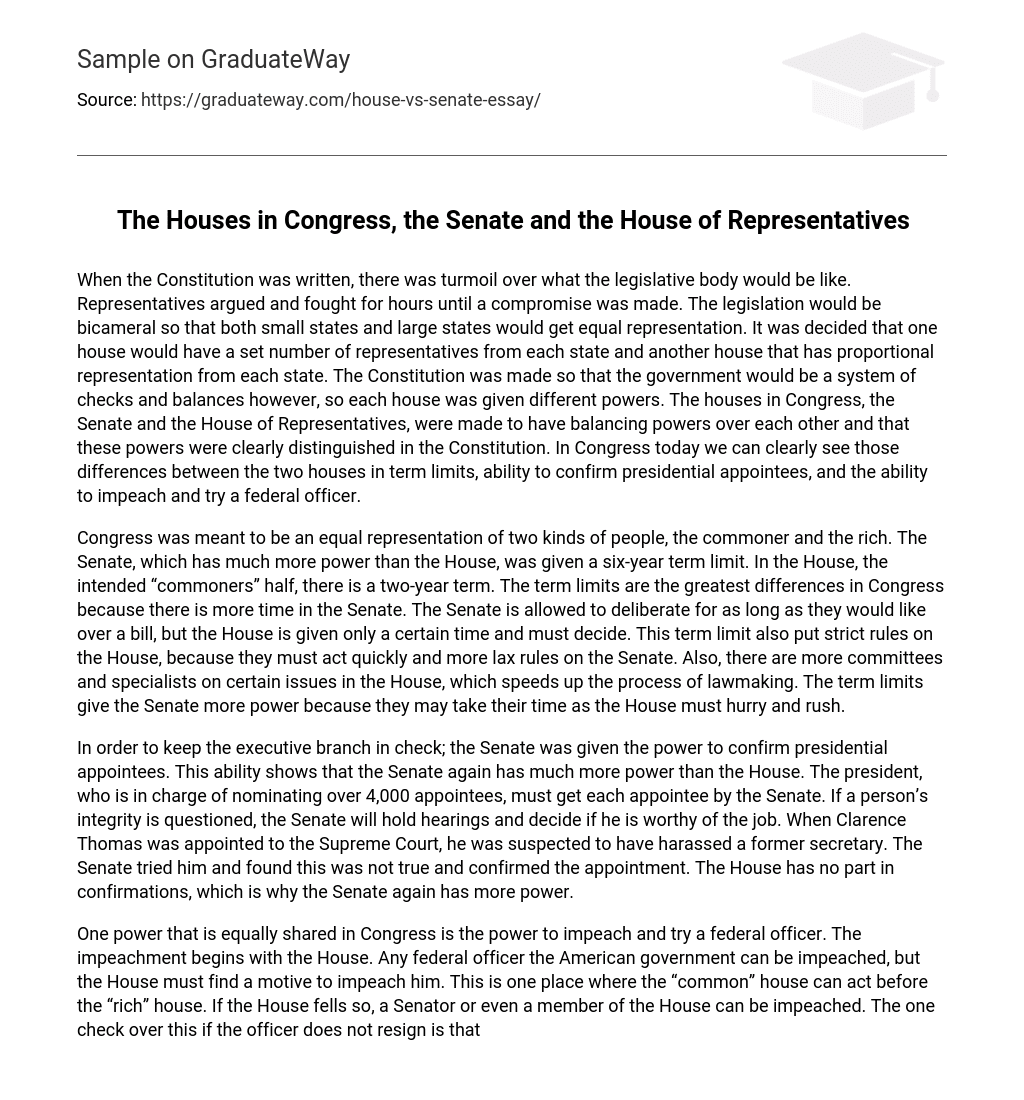When the Constitution was written, there was turmoil over what the legislative body would be like. Representatives argued and fought for hours until a compromise was made. The legislation would be bicameral so that both small states and large states would get equal representation. It was decided that one house would have a set number of representatives from each state and another house that has proportional representation from each state. The Constitution was made so that the government would be a system of checks and balances however, so each house was given different powers. The houses in Congress, the Senate and the House of Representatives, were made to have balancing powers over each other and that these powers were clearly distinguished in the Constitution. In Congress today we can clearly see those differences between the two houses in term limits, ability to confirm presidential appointees, and the ability to impeach and try a federal officer.
Congress was meant to be an equal representation of two kinds of people, the commoner and the rich. The Senate, which has much more power than the House, was given a six-year term limit. In the House, the intended “commoners” half, there is a two-year term. The term limits are the greatest differences in Congress because there is more time in the Senate. The Senate is allowed to deliberate for as long as they would like over a bill, but the House is given only a certain time and must decide. This term limit also put strict rules on the House, because they must act quickly and more lax rules on the Senate. Also, there are more committees and specialists on certain issues in the House, which speeds up the process of lawmaking. The term limits give the Senate more power because they may take their time as the House must hurry and rush.
In order to keep the executive branch in check; the Senate was given the power to confirm presidential appointees. This ability shows that the Senate again has much more power than the House. The president, who is in charge of nominating over 4,000 appointees, must get each appointee by the Senate. If a person’s integrity is questioned, the Senate will hold hearings and decide if he is worthy of the job. When Clarence Thomas was appointed to the Supreme Court, he was suspected to have harassed a former secretary. The Senate tried him and found this was not true and confirmed the appointment. The House has no part in confirmations, which is why the Senate again has more power.
One power that is equally shared in Congress is the power to impeach and try a federal officer. The impeachment begins with the House. Any federal officer the American government can be impeached, but the House must find a motive to impeach him. This is one place where the “common” house can act before the “rich” house. If the House fells so, a Senator or even a member of the House can be impeached. The one check over this if the officer does not resign is that the Senate must put the officer on trial and convict him. The House has the power to act first, but the Senate must then back their actions.
Congress was outlined in the Constitution to so that two sides we appeased. As seen, the Senate has much more power over the House. The Senate has a longer term limit and may debate for hours, where the House has little time and must get things done fast. The Senate can confirm or reject a presidential appointee. The House has the power of impeachment over the Senate, but the Senate must the try the impeached. The Senate was meant to have more power because it was to be made up of the higher-class citizens in early United States history. Over time the class distinction made no difference but the powers remained the same. The Senate will always have more power than the House.





